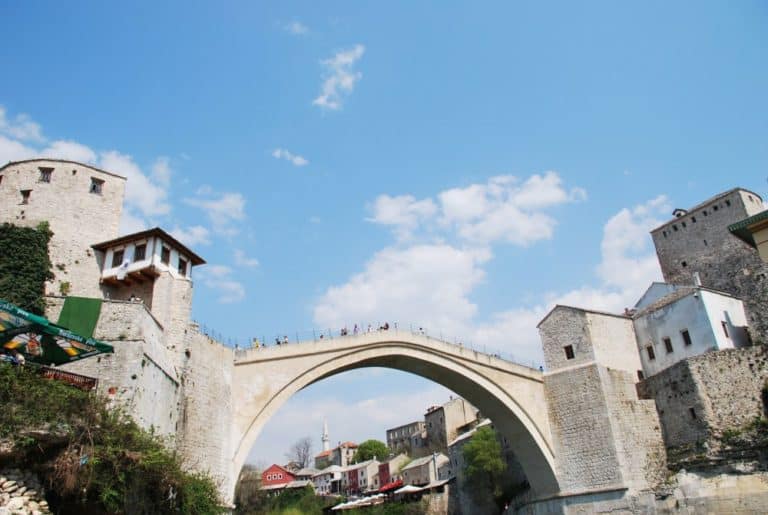Mostar
Mostar is situated in an enchanting valley that is surrounded by mountains and divided by the Narenta River.
Its geographical position made this a favourable spot for human settlements as far back as the 12th century – and possibly even earlier.
The city is part of the Federation of Bosnia and Herzegovina and is the capital of the province of Herzegovia-Narenta.
The invading Ottoman Empire took possession of the town in the late fifteenth century, developing its commercial significance thanks to the river that runs through it which helped in making the city into an important economic and trading centre.
In 1878, the city was annexed by the Austro-Hungarian Empire.
On the 29th October, 1918, with the end of the First World War, the city was annexed with the Slovenian, Croatian and Serbian states with the capital being in Belgrade and subsequently, in accordance with the union to the Kingdom of Serbia, which gave birth to the Kingdom of Yugoslavia.
During the war that devastated the former Yugoslavia, Mostar was invaded and suffered interminable months of bombs and shelling. Many beautiful historic buildings were destroyed and a large quantity of invaluable artworks were lost forever.
Amongst the buildings that were destroyed were: A Monastery, a Cathedral and places of worship belonging to the Muslim community, the episcopal Palace with a library attached that contained over 50,000 ancient tomes – all of which were destroyed.
Mostar owes its name to the Stone Bridge which was erected from a single arch measuring 29 metres and the two towers at opposite ends of the bridge which are called “Mostari,” and are also known as “The Custodians of the Bridge” which was built in 1565 but destroyed during the war by a Croatian mortar.
The reconstruction of the bridge was completed in 2004 and it was subsequently declared as a World Heritage Site in 2005.
– Population: 113,169 according to figures from 2013
– Surface area covered: approximately 1,005 square kilometres
– Altitude: 60 metres above sea level
– Postal code: 88000
– Telephone area code: 036
– Time Zone: GMT+1
– Airport: Mostar International Airport, situated in the nearby town of Ortijes, tel.+387(0)36 350212 fax +387(0)352051. IATA Code: OMO; web address:
www.mostar-airport.ba/
Places of Interest in Mostar:
– Without doubt the Old Bridge ( Stari Most ) dating from 1665 is the main attraction in addition to being seen as the symbol of the city.
– The Mosques of Koski Mehmed and Karadoz Bey which are considered to be the most beautiful in the region.
– The Franciscan Church, (Franjevacka crkva) which has the highest bell tower in
Bosnia-Herzegovina
– The historic district of Mostar, known as Stari Grad.
– The district of Brankovac where the ancient Ottoman houses and courtyards belonging to some of the historic families of Mostar are located
– Biscevica street where the Turkish house of the same name is located.
– The Museum of Herzegovina
– The Rujiste Natural Park in the Prenj mountain range.
– The Mostarsko Blato natural park in the area to west of the city
– The Diva Grabovica Nature Reserve
– The Tara Tower which, historically, was used as a weapons store
– And don’t miss out on a stroll around the quaint artisans’ shops in the old district of Mostar
Mostar is the tourist destination
[ Apr.2009 ] Mostar in Bosnia and Herzegovina is a famous tourist destination. There were many tourists there, but individual one who came from Sarajevo by bus like me were minority. Most of them seemed…


